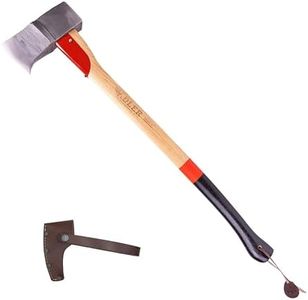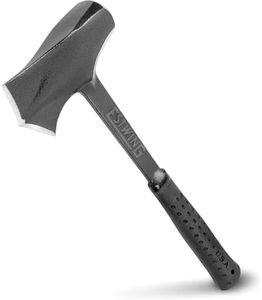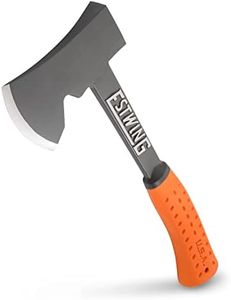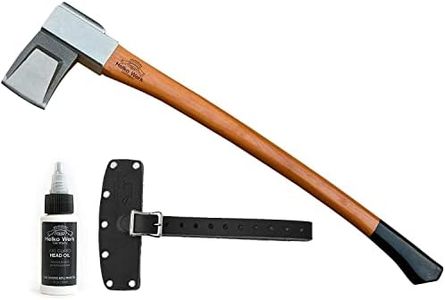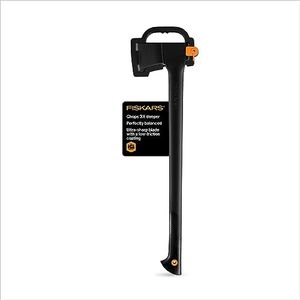We Use CookiesWe use cookies to enhance the security, performance,
functionality and for analytical and promotional activities. By continuing to browse this site you
are agreeing to our privacy policy
10 Best Splitting Axes
From leading brands and best sellers available on the web.Buying Guide for the Best Splitting Axes
Choosing the right splitting axe is all about matching the tool to your needs and physical abilities. Think about what you’ll be splitting, how often you’ll use the axe, and your level of experience. Splitting axes are designed to split wood along the grain, not chop it like a regular axe, so their shapes and sizes have a real impact on performance and comfort. Understanding the main specifications will help you make a choice that feels safe, efficient, and suited to your tasks.Axe LengthAxe length refers to the total distance from the end of the handle to the top of the axe head. Longer axes (typically 28-36 inches) allow for more powerful swinging, making them great for splitting large logs. Shorter axes (around 14-28 inches), often called 'hand splitters' or 'mauls,' are easier to control and better suited for smaller pieces of wood or if you prefer a lighter tool. If you’re splitting big logs or want maximum force, a longer handle is helpful. For occasional use or smaller pieces, a shorter handle means better control and less fatigue.
Axe WeightThe weight of a splitting axe usually ranges from about 2 to 6 pounds. Heavier axes deliver more force and can split thick, tough logs more easily—but they can tire you out faster and are harder to control. Lighter axes are easier to handle, especially for beginners, and are better for smaller wood. If you have a lot of splitting to do or usually work with big logs, a heavier axe may be efficient. Otherwise, consider what you’re comfortable swinging repeatedly without straining your arms or back.
Head ShapeThe head shape of a splitting axe is designed to create a wedge effect that forces wood fibers apart. Some heads are more wedge-shaped and wide, making them excellent at splitting logs in one strike but sometimes harder to withdraw from the wood. Others have a more gradual taper, offering easier retrieval but perhaps needing more strikes per split. For larger, stringy, or green wood, a wide wedge is often better. For dry, straight-grained logs, a narrower head can work well and is easier to pull out.
Handle MaterialHandle material affects durability, shock absorption, and comfort. Traditional wooden handles (like hickory) provide good shock absorption and a classic feel, but can break if misused. Fiberglass or composite handles are more durable and resist weathering, though they may transmit more vibration to your hands. Steel handles are toughest but can be harsh on your arms. If you value tradition and comfort, wood is appealing; for extra durability and low maintenance, composites are better.
Grip and Safety FeaturesSome axes have textured, shaped, or rubberized grips to prevent slipping and reduce blisters. Built-in flares or knobs at the end improve control and help prevent the axe from sliding out of your hand. If you’re new to splitting or plan to use the axe for long sessions, ergonomic grip features and slip-proof surfaces reduce the risk of accidents and fatigue.



